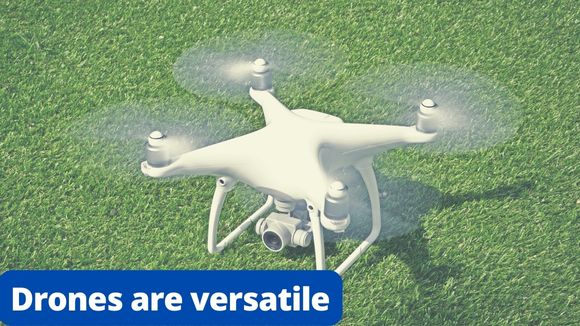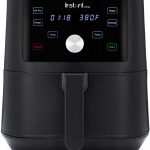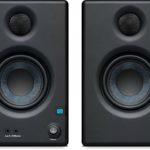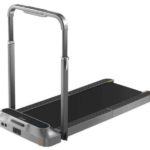Drones are a hot topic right now. They seem to be popping up everywhere and people are curious about them. Drone technology is becoming more and more commonplace in our society. You may have seen them hovering over neighborhoods, or even flying near major sporting events. But how do drones work, and what benefits do they offer?
Table of Contents
How Do Drones Work?

Drones are unmanned aerial vehicles that can be controlled remotely. They come in all shapes and sizes, from tiny quadcopters that can fit in the palm of your hand to large military-grade aircraft.
- Drones are equipped with a variety of sensors and cameras, which allows them to be used for a wide range of purposes, such as photography, videography, surveillance, and even delivery.
- They are controlled using a remote control or a smartphone app. The operator uses the remote control to pilot the drone, while the app allows for additional features such as camera control and flight planning.
- Most drones use GPS to help keep them stable in the air and to ensure they return to their original take-off point if they lose contact with the operator.
- The ground control station is the central nervous system for most drones, providing a pilot with information about the drone’s status and surroundings while in flight. The operator interface for a GCS typically includes a video display, joysticks, and various switches to control the drone.
- Payloads can be thought of as the accessories of a drone, such as cameras, sensors, or other mission-specific equipment. To keep payloads light and maneuverable, many drones use lithium-ion batteries, which require frequent recharging.
- Data links are used to communicate with the drone during flight and can be either wireless or tethered. Wireless data links are limited in range but offer more flexibility, while tethered data links provide unlimited range at the expense of mobility.
What Are Drones Used for?
Military drones
Military drones are used for a variety of purposes, including reconnaissance, surveillance, and target acquisition. They can also be used to carry out attacks such as airstrikes.
Drones provide the military with many advantages over traditional aircraft. For example, they are cheaper to operate and can be used to gather intelligence in dangerous or inaccessible areas. Drones can also stay in the air for longer periods than manned aircraft.
One of the most important advantages of using drones is that they can be operated remotely, which reduces the risk to pilots and other soldiers.
Drones for delivery
Drones are being used to deliver a variety of items, including food, medicine, and packages. In some cases, drones are even being used to deliver blood and other medical supplies to remote areas.
One of the biggest advantages of using drones for delivery is that they can be done quickly and efficiently. Drones can also reach places that traditional vehicles cannot, such as remote locations or difficult-to-access areas.
However, some challenges need to be addressed before drone delivery becomes widely available. For example, regulatory issues need to be sorted out, and the reliability and safety of drone deliveries need to be improved.
While drone delivery is still in its early stages, it has the potential to revolutionize the way we receive our goods.
Drones for emergency rescue
Drones are being used to assist in emergency rescues. For example, they can be used to locate missing people or deliver supplies to stranded victims.
Drones can reach places that are inaccessible by traditional means, such as difficult-to-reach areas or locations that have been affected by natural disasters. They can also be used to provide a real-time view of an area for rescue workers.
Drones in agriculture
Drones are being used in agriculture to help with a variety of tasks, such as crop mapping, planting, and spraying.
Drones are becoming an increasingly popular tool in agriculture, as they offer a variety of advantages over traditional methods. For example, drones can be used for crop mapping, allowing farmers to more accurately assess the health of their plants. They can also be used for planting and spraying, as they can cover a larger area in a shorter amount of time.
In addition, drones can be fitted with sensors that help to detect crop stressors, such as pests or diseases. As a result, they can help farmers to more quickly and efficiently address problems with their crops.
Drones in outer space
Drones are being used in outer space for a variety of purposes, including satellite deployment, repair, and inspection.
Drones can be used to deploy satellites quickly and efficiently. They can also be used to repair or inspect satellites that are already in orbit. In addition, drones can be used to collect data about the planets and other objects in our solar system.
However, there are some concerns about the use of drones in outer space. For example, there is the potential for collisions with other satellites or debris. There is also the risk that drones could malfunction and cause property damage or injure people. Nonetheless, drones offer a unique and efficient way to explore and study our solar system and beyond.
Drones for wildlife and historical conservation
Drones are being used for wildlife and historical conservation. For example, they can be used to monitor endangered species or track the movements of poachers.
Drones can cover large areas of land quickly and efficiently. They can also be used to gather data about wildlife, which can be used to improve conservation efforts. In addition, drones can be used to monitor historical sites, which can help to preserve them for future generations.
In many cases, drones can provide a cost-effective and safe way to explore and protect natural and cultural resources. While there are some concerns about privacy and the potential for misuse, it is clear that drones can be a powerful tool for conservation. With proper regulation, drones could play a key role in preserving our planet’s wildlife and history.
Drones in medicine
Drones are currently being used in the medical field to transport blood, organs, and other medical supplies.
Drones can reach patients in remote areas quickly and efficiently. They can also be used to transport sensitive medical supplies, such as blood or organs, without damaging them. In addition, drones can be used to deliver medication to patients who may not be able to leave their homes.
The potential applications of drone technology in the medical field are endless, and it is exciting to think about how this new technology will help save lives in the future.
Drones in photography
Drones are being used in photography to capture unique and interesting views of the world.
They can fly high and reach areas that are inaccessible to traditional cameras. They can also be used to capture fast-moving objects, such as cars or athletes. In addition, drones can be used to take aerial photos and videos, which can be used for advertising or tourism purposes.
Benefits of Drones
Drones are cost-effective
Unlike traditional manned aircraft, drones don’t require an onboard pilot, which reduces the overall cost of the aircraft. This makes drones a more affordable option for businesses and civilians alike.
Drones take better aerial photos
Drones can capture aerial photos and videos that are sharper and more detailed than those taken by traditional cameras. This makes them a popular choice for businesses and civilians who want high-quality aerial photos or videos. In addition, drones can be used to capture photos and videos in difficult-to-reach places, such as high up in the mountains or deep underwater.
Drones are versatile
Drones can be used for a variety of purposes, such as photography, videography, agriculture, and even package delivery.
In many cases, drones can do things that would be difficult or impossible for humans to do. For example, drones can fly into places that are too dangerous or inaccessible for people, such as active volcanoes or combat zones.
They can also carry heavy loads or stay in the air for long periods. As a result, drones are a valuable tool for businesses and individuals alike.
Drones are easy to operate
Drones are controlled using a remote control or a smartphone app. This makes them easy to operate, even for beginners. Many drones come with pre-programmed flight routes and autopilot features, so you don’t always have to be in direct control.
Of course, operating a drone does require some practice, and it’s important to familiarize yourself with the controls before taking off. But once you’ve mastered the basics, you’ll be able to enjoy all that drones have to offer.
Drones are safe
Since drones don’t require an onboard pilot, they are much safer than traditional manned aircraft. This makes them ideal for use in dangerous or sensitive areas such as prisons or airports.
Furthermore, drones are equipped with several safety features such as GPS tracking and automatic return-to-home if they lose contact with the controller. As drone technology continues to evolve, we can expect these safety features to become even more sophisticated, making drones an increasingly safe option for a variety of applications.
Drawbacks of Drones
Drones can be expensive
While drones are cost-effective overall, they can still be quite expensive. This is especially true for high-end models that are equipped with features such as 4K cameras and GPS.
While there are many drones in the affordable range, the initial investment can still be quite pricey for some people. As a result, it’s important to do your research before purchasing a drone. By understanding your needs and budget, you can find the perfect drone for you without breaking the bank.
Drones can be difficult to operate
Drones are a relatively new technology, and as such, they can be difficult to operate. Many drones are controlled using a remote control or smartphone app, which can be challenging for beginners.
In addition, drones often have a variety of features and settings that can be confusing to new users.
As a result, it is important to take the time to learn how to operate a drone before attempting to use one. There are many resources available that can help, including online tutorials and instructional videos. With a little practice, operating a drone can be easy and enjoyable.
Drones can be dangerous
Since drones are unmanned, they can be difficult to see, which makes them a potential hazard to other aircraft. In addition, if a drone were to crash, it could cause serious property damage or even injure people.
Drones can be equipped with weapons, making them a potential threat to public safety. As drone technology continues to advance, it is important to ensure that appropriate measures are in place to prevent misuse.
Drones can be used for nefarious purposes
While drones have many potential uses, they can also be misused in ways that invade people’s privacy. For example, drones equipped with cameras can be used to spy on people in their homes or on private property. This type of surveillance can be very intrusive and violating. In some cases, it may even be illegal.
If misused, drones could be used to inflict serious harm on innocent people. It is important to be aware of the potential risks associated with drone technology and to use it responsibly.
Drones can be noisy
Drones are powered by rotors, which make them quite noisy. This can be a nuisance to people who live near where the drone is being operated.
Some drones have been designed to be quieter, but they typically don’t fly as well as their louder counterparts. There are also aftermarket options available to help reduce the noise of drones, but they can be expensive and may not work as well as advertised.




I’m delighted you brought up the fact that drones have sensors and cameras. As you indicated, this can be useful for a variety of things, including delivery and even monitoring. I’ll definitely share this with my nephew because he’s interested in drone technology after seeing one in person. I appreciate you sharing!